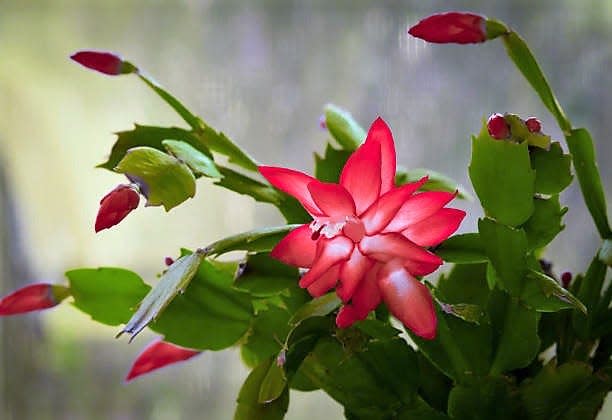OSU Extension: Christmas gifts and safety tips for your holiday season
Are you giving your fresh cut Christmas tree plenty of water?
A fresh tree can use up to 1 quart of water per day for each inch of diameter on the cut end. A typical 7-foot tree may have a 3-inch trunk diameter, so will need up to 3 quarts of water per day. If your tree is taking up a lot of water, this is actually a good sign and indicates the tree is fresh and hydrated. Be sure to replace the water that is used each day and don’t allow the stand to dry out. Do not add sugar, aspirin, bleach or floral preservatives to the water; plain tap water is all that is needed to keep your tree fresh.
Sunglasses can be a Stocking Stuffer
Even though we have not yet seen the first significant snow in Fairfield County, it is important to remember, sunglasses should be worn in the winter, too. Snow blindness, also called sunburn of the eyes, occurs during winter months. Symptoms occur eight to 10 hours after time outdoors. Eyes feel dry or irritated as if full of sand. Eyes may be red and tear excessively, and eyelids may swell and be painful to blink. You can prevent snow blindness by wearing sunglasses while driving or participating in winter recreation activities. Maybe sunglasses would make a good stocking stuffer.
Give the Gift of Safety During the Holiday Season
As we all know, December is a month for many holiday traditions. It is a time to give thanks and gather with friends, family, and community members. However, this month is also a time to be mindful of safety. Safety topics can range from food safety, fire safety, road safety and personal safety (for home and shopping.)
Safety items can also make great gifts for people of all ages. If bicycles, scooters, dirt bikes, ATVs, or even ponies are on the wish list – please remember to add a helmet to the total package.
College students and new homeowners can benefit from fire protection systems like smoke/carbon monoxide detectors and fire extinguishers. The TV ads don’t show the car safety kit when they advertise big ticket vehicles with a big red bow on top of them – but even used car drivers could use this popular road safety gift. Adding safety to the gift-giving season is a way to show you care.
Source: OSU Ag Safe Tactics Newsletter

Christmas cactus are a fun holiday plant gift
Holiday cacti are known for their colorful tubular flowers and ease of care. They include Christmas, Thanksgiving and Easter cacti. Christmas cacti have flattened leaves with rounded teeth on the margins as opposed to the Thanksgiving cactus which has pointed teeth. Easter cacti have pointed teeth with fibrous hairs in the leaf joints. Under normal conditions, the holiday cacti will bloom close to the holiday suggested in its name.
Holiday cacti are easy to care for once you realize they are not the sun-loving, drought-loving cacti of the desert. In their native range, they live in the rainforest of the Organ Mountains of Brazil. As epiphytes, they live in tree branches happily rooted in accumulated organic debris with rainfall amounts varying from a whopping 17 inches per month in December through March to just 3 inches per month in the subsequent dry season.
Holiday cacti are short-day plants meaning they bloom when nights are at least 14 hours long and daylight periods are between eight to 10 hours for six weeks. Streetlights or indoor lighting may disrupt the required dark period so they may need to be covered each night. Holiday cacti will also flower if exposed to prolonged cool temperatures between 50 and 55 degrees F. No flowers will form at night temperatures above 68 degrees F regardless of light length. The naturally longer nights and cool temperatures in late summer will encourage flower development.
Once plants are in flower, they should be kept in bright, indirect light. Day temperatures of 70 degrees F and evening temperatures of 60 to 65 degrees F are considered ideal. Be sure to water thoroughly, but let the plant dry slightly between waterings. It is especially important not to let the soil dry too much during flowering.
Once flowers fade, continue to grow the plant as a houseplant. Soil should be well drained and most container soils will work. Fertilize monthly between April and October with a complete houseplant fertilizer. Prune plants in June to encourage branching and more flowers. Just remove a few sections of each stem with your fingers or a sharp knife. The removed pieces can be rooted in moist vermiculite to make more plants.
Common problems with Christmas cacti include dropping unopened flower buds, which may be caused by low humidity, a sudden change in temperature or light, or soil that is too dry. The most common insect pests are mealybugs and soft brown scale. The major disease is stem and root rot. Plants appear wilted and dull gray-green with water-soaked dead areas near the soil line often with faded reddish margins. Stem leaves often fall off. Avoiding excessive watering to prevent. Cut out infected areas, and repot them into clean soil.
OSU Extension Holiday Hours
Please note OSU Extension in Fairfield County will be closed Dec. 23-Jan. 2. We will re-open at 7:30 a.m. on Tuesday, Jan. 3. Our office is in the Fairfield County Agriculture Center located at 831 College Ave. Happy Holidays to all!
This article originally appeared on Lancaster Eagle-Gazette: OSU Extension: Christmas gifts and safety tips for your holiday season
